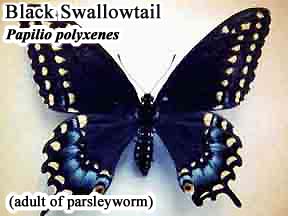Carrot (Daucus)
Plant Health Problems
Diseases caused by Fungi:
Root and crown rot, Rhizoctonia solani, Pythium
spp., Fusarium spp.
Symptoms appear as wilting and a slow or rapid collapse of the
plant. The roots can appear brown and water-soaked instead of
white. A water-soaked lesion can often appear at the base of the
stem.
Control can be achieved by using a two-year rotation with
nonsusceptible plants, such as corn, to prevent the buildup of
pathogenic organisms in the soil.
Leaf blight, Alternaria dauci.
Leaf blight is caused by a fungus and starts on the foliage as
dark brown spots which grow together and may kill whole leaves.
If the disease is very severe, the whole carrot top may be
killed. This fungus disease usually attacks the older foliage.
Ordinarily, carrots in Connecticut do not require spraying for
the control of this disease. In wet seasons, however, carrot
foliage may be protected by spraying with compounds. Thorough
spray coverage is essential for control. Control can be achieved
with the use of fungicide sprays applied as soon as symptoms are
visible. Among the compounds registered for use in Connecticut
are chlorothalonil, mancozeb, and iprodione. Consult the label
for dosage rates and safety precautions.
Diseases caused by Phytoplasmas:
Aster yellows, phytoplasma.
Carrots that have aster yellows have an abnormal number of
leaves. The leaves are yellow, twisted, and stunted. The roots
remain slender and have an abnormal number of fine hairy roots.
Carrot yellows is caused by a bacterium-like organism called a
phytoplasma which also causes lettuce yellows and aster yellows.
The virus is carried by leaf hoppers.
To keep down the amount of disease, growers should control leaf
hoppers with insecticides and avoid planting carrots near asters.
Diseases caused by Nematodes:
Root-knot nematodes, Meloidogyne hapla.
Infected plants are stunted and sickly, with knots on their small
feeding roots. This disease is caused by nematodes which can
persist in the soil for years.
Rotation with nonsusceptible plants, such as corn, can reduce the
number of nematodes in the soil. Growing carrots in a new area
will also control the disease. Care should be taken to avoid
carrying any soil from the old site to the new site.
Insect Problems:
Aphids, Aphis and Myzus sp.
The bean aphid, Aphis fabae, green peach aphid, Myzus
persicae, and corn root aphid, Aphis maidiradicis, all
occasionally infest carrot. Control is usually not necessary.
Aster leafhopper, Macrosteles quadrilineatus.
Although this leafhopper causes little direct injury, it is
important because it carries the pathogen causing aster yellows
disease on carrots, other vegetable crops and ornamental plants.
The adult leafhoppers are about 1/8" long and are light
grayish-green or greenish-yellow in color. They can be
distinguished from other leafhoppers by the six dark lines on the
face. There are carrot varieties that are relatively resistant to
aster yellows disease, including Royal Chantenay, Scarlet Nantes,
El Presidente, Charger, Six Pack, Amtou, Toudo, and Gold King.
Vegetable variety availability changes frequently, however. Row
covers can be used to exclude leafhoppers from the crop. Carbaryl
and malathion are among the compounds registered for control of
this pest in Connecticut. Consult the label for dosage rates,
safety precautions, and preharvest intervals.
 Black swallowtail,
Papilio polyxenes.
Black swallowtail,
Papilio polyxenes.
This caterpillar is occasionally found on carrot, parsley, dill,
fennel, celery, and other cultivated or wild members of the
carrot family. The caterpillars are about 2" long when fully
grown, and green with a yellow spotted black lateral band on each
segment. The adult is the common large black swallowtail
butterfly with a wingspread of almost 4". It has two nearly
parallel rows of yellow spots on the outer margins of the wings
and other light blue areas on the rear wings. This insect
overwinters as a tan colored chrysalis and there are two
generations each year. They rarely require control other than
hand picking.
Carrot rust fly, Psila rosae.
This slender fly, 1/4" long, with a metallic blue-black body
emerges from overwintering as a pupa in mid-May. It lays eggs in
the soil close to the plant late in May, and the young maggots
work their way downward along the root and begin feeding at the
tip of the root. Older larvae tunnel in the lower third of the
main root. The burrows are rusty brown in color, which explains
the name. The maggots pupate in the soil and there are two
generations of the fly each season. First generation maggots feed
from June to July and the second generation from late August into
September.
This insect has not been a serious pest in Connecticut and control has not been necessary.

